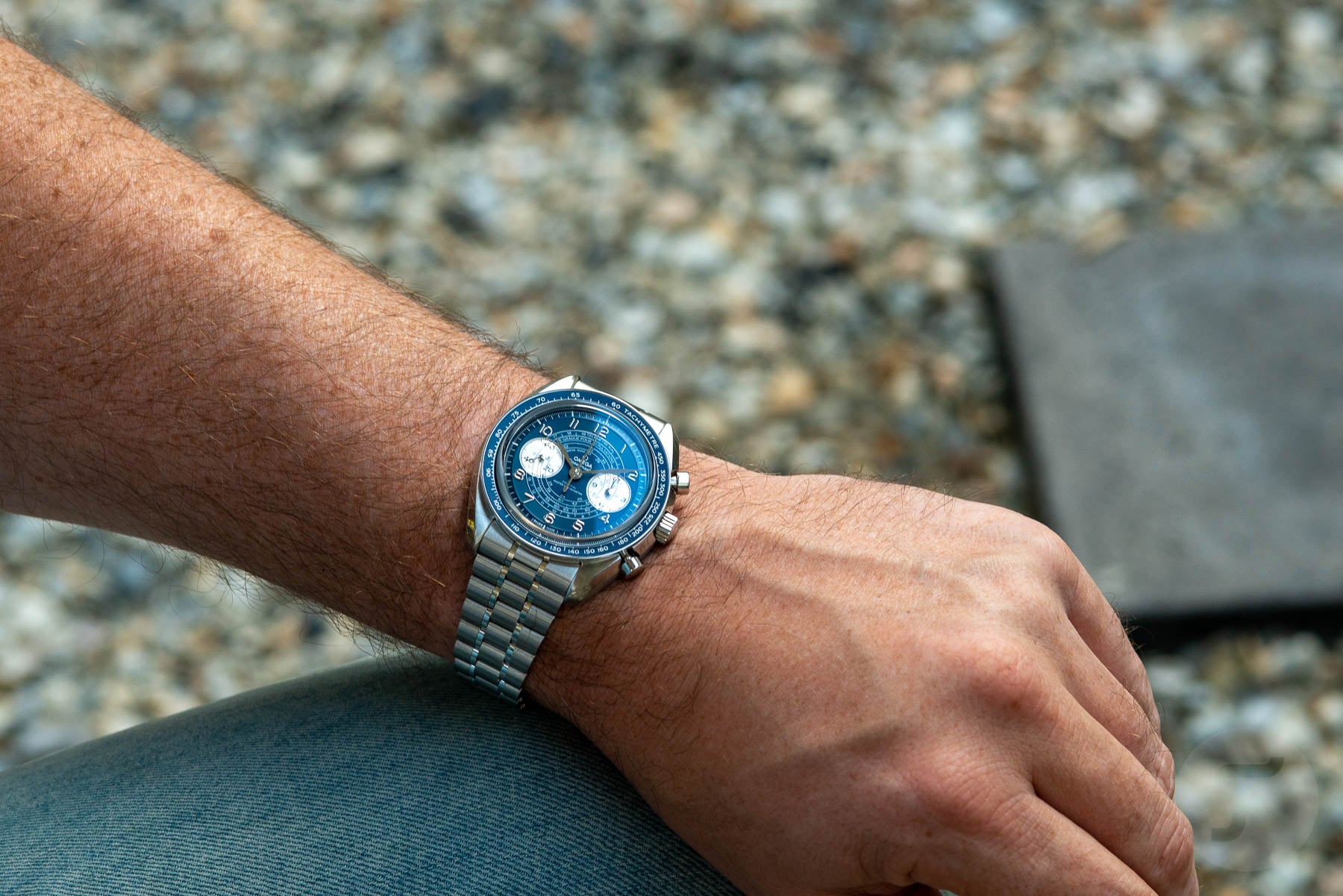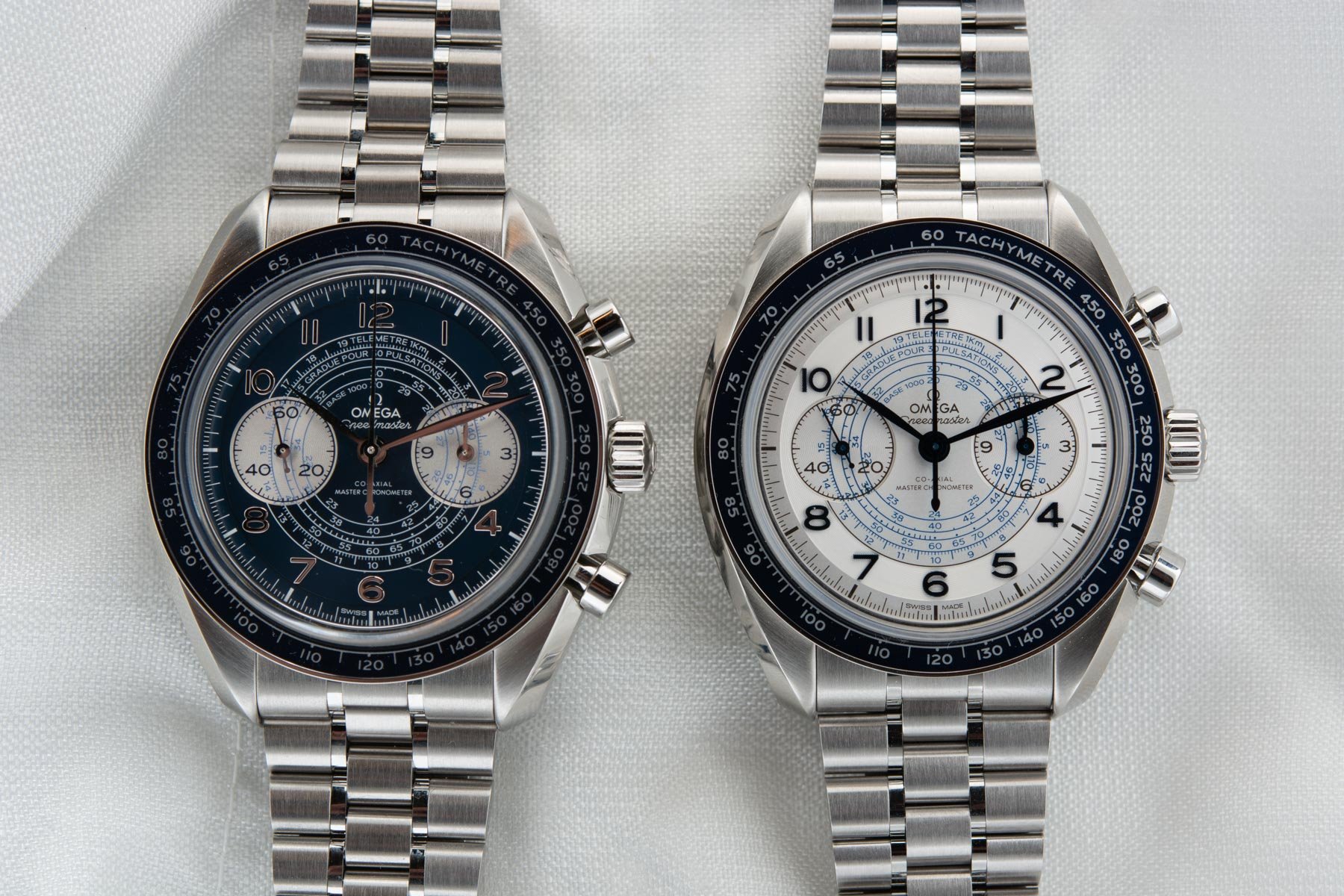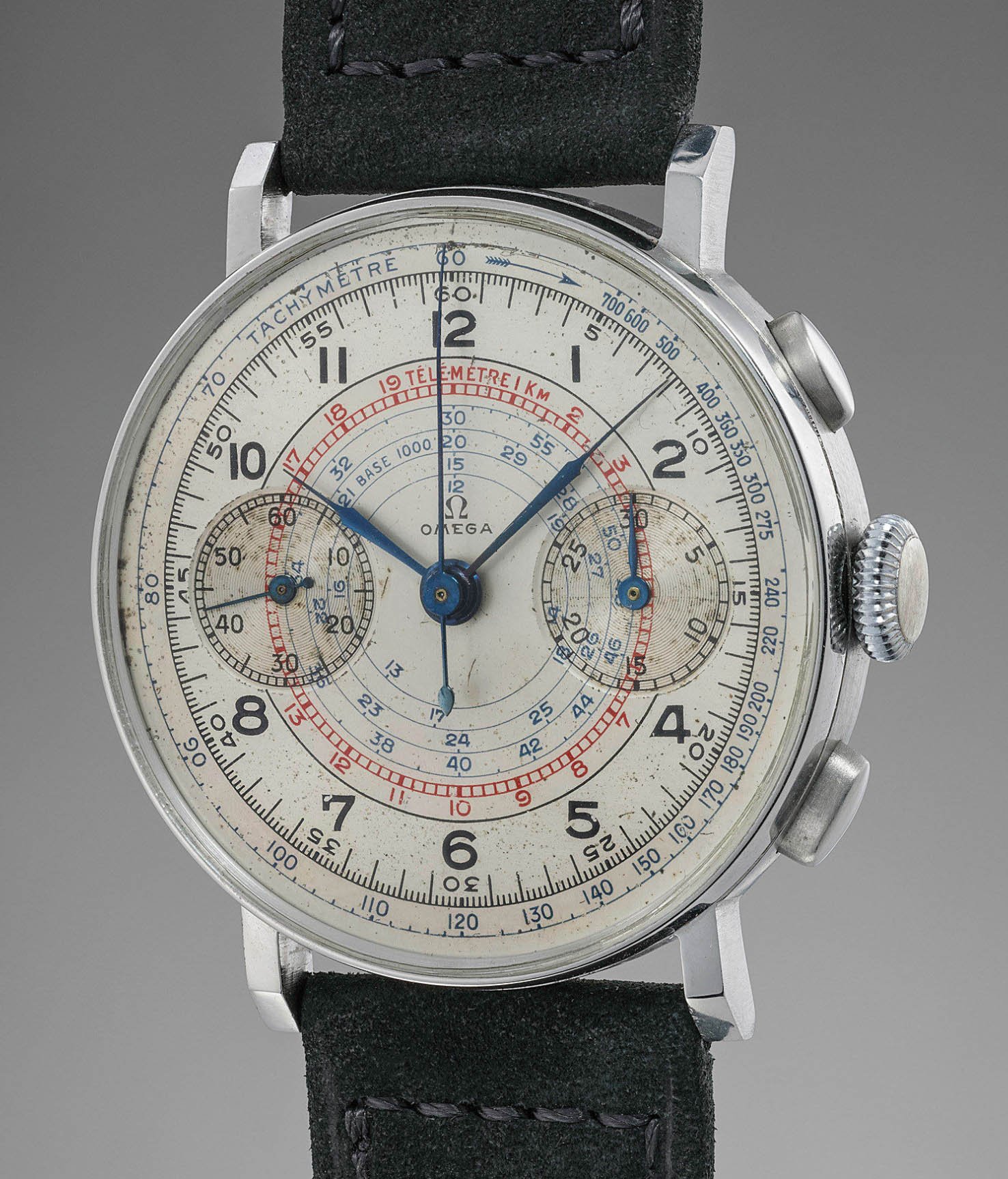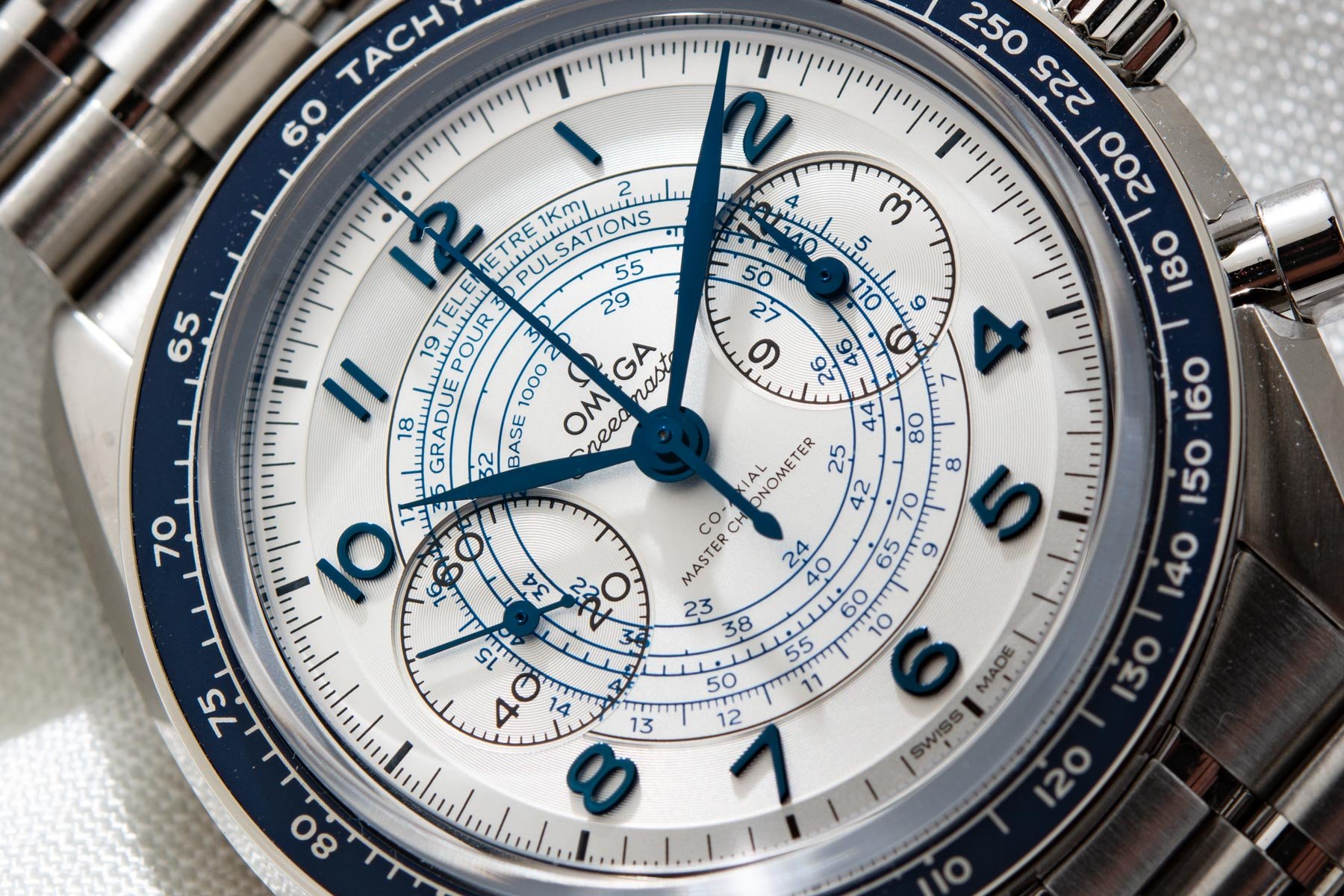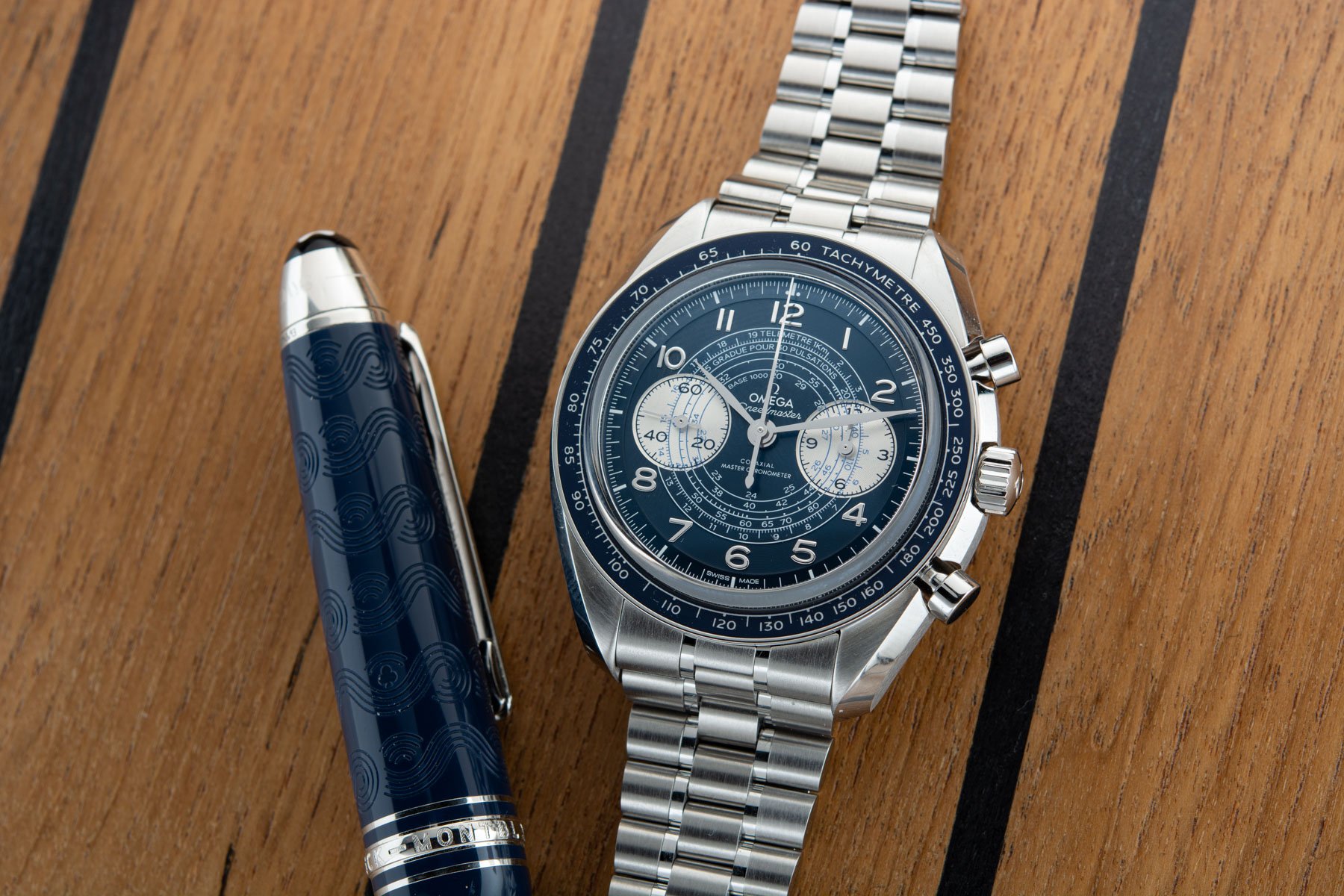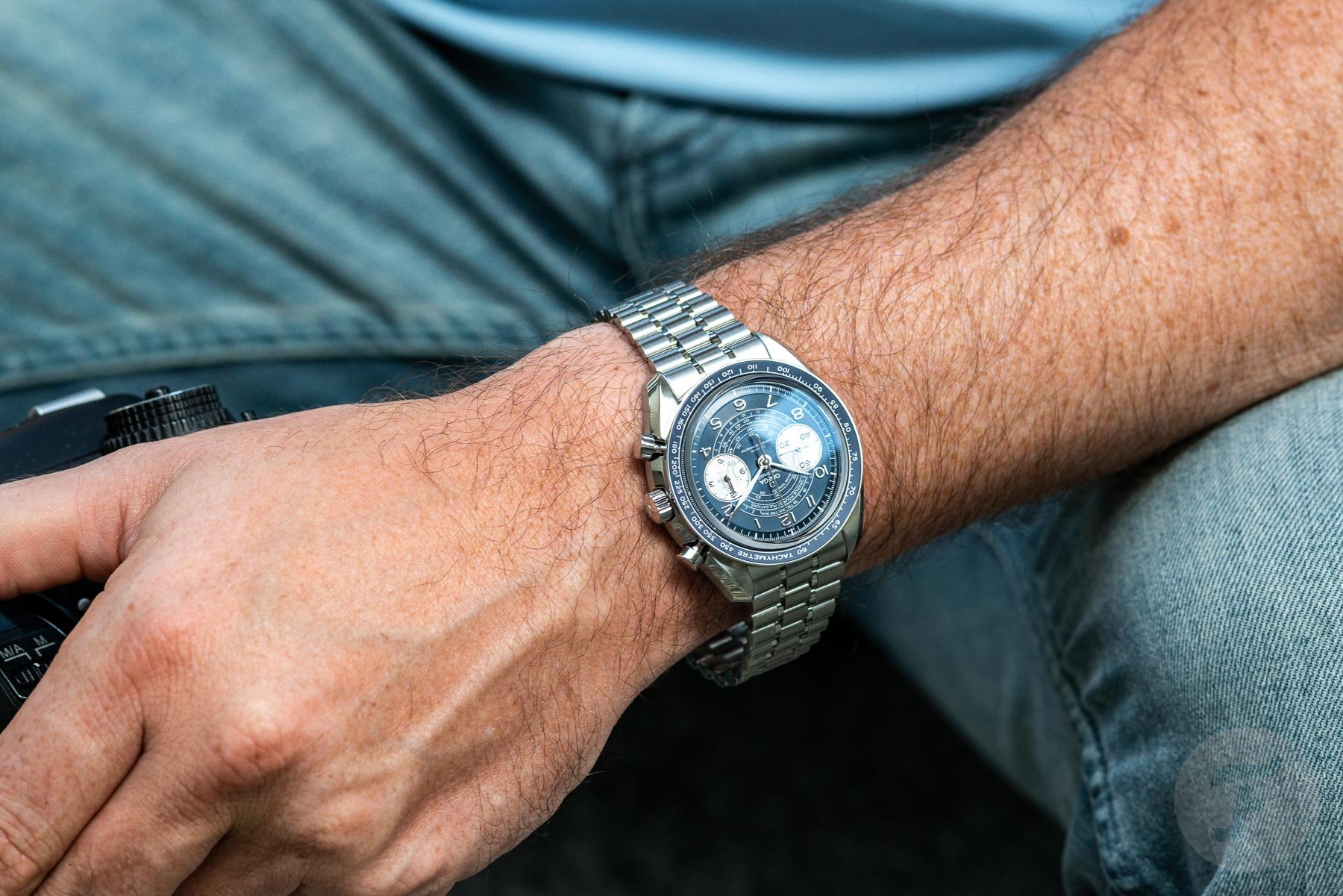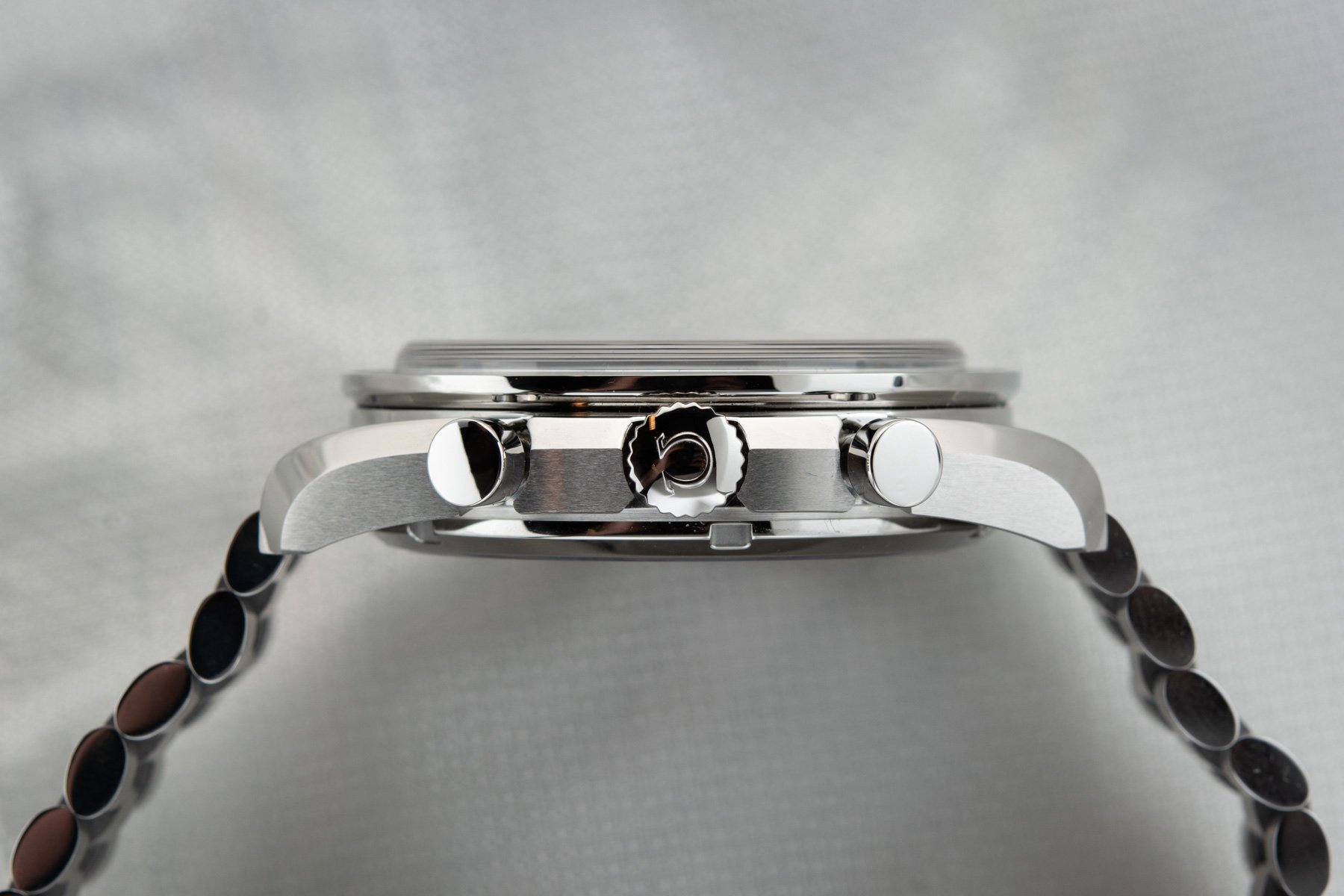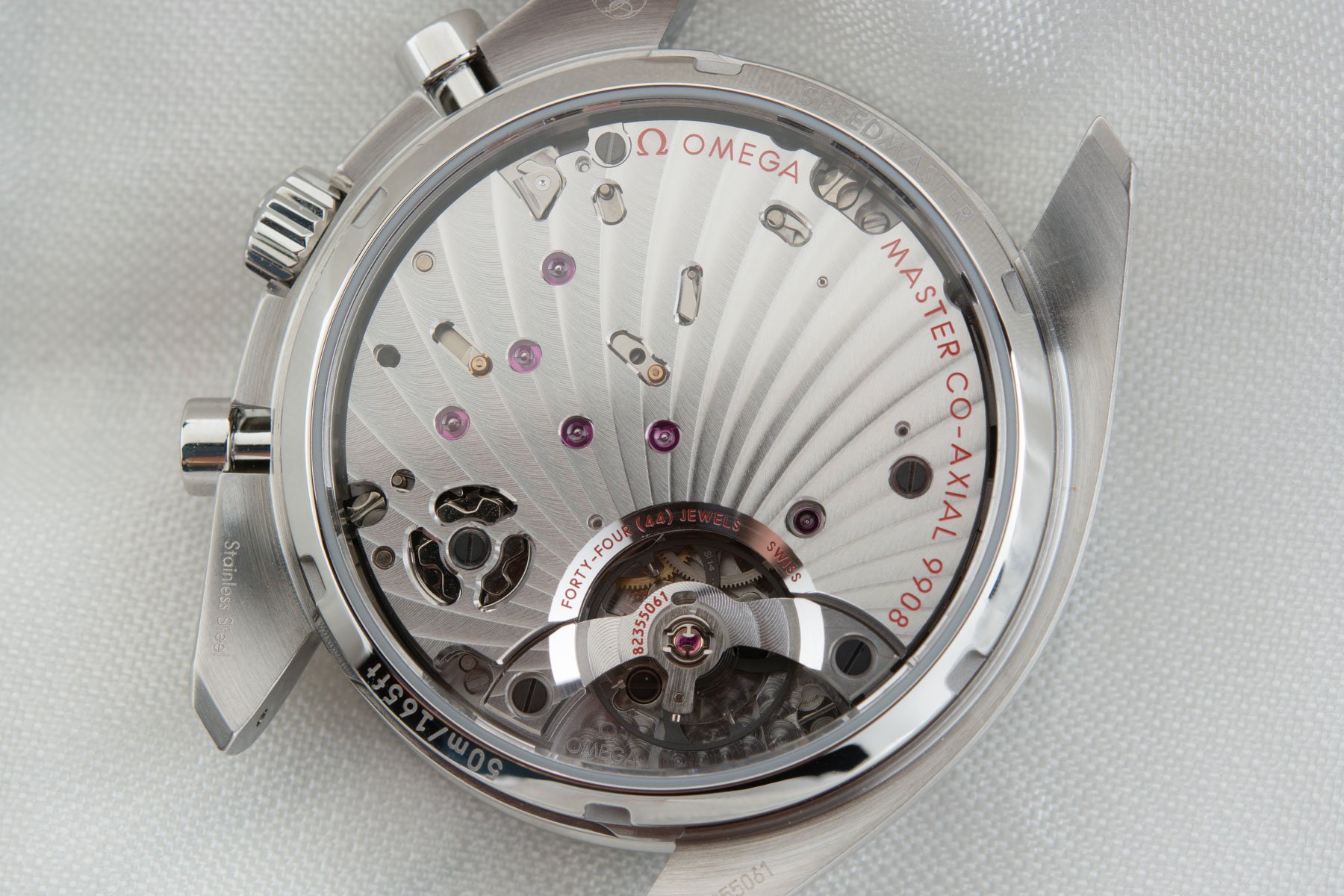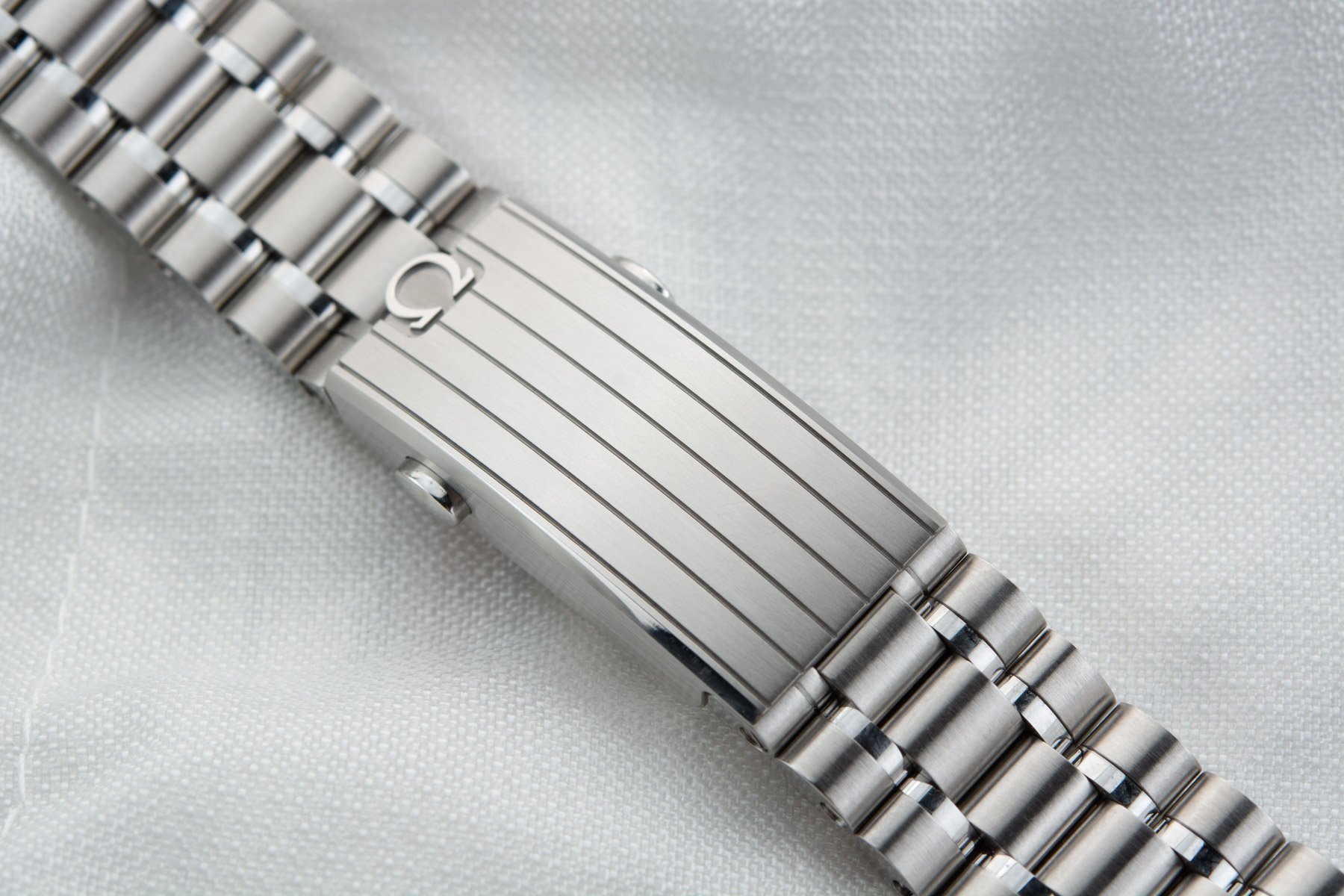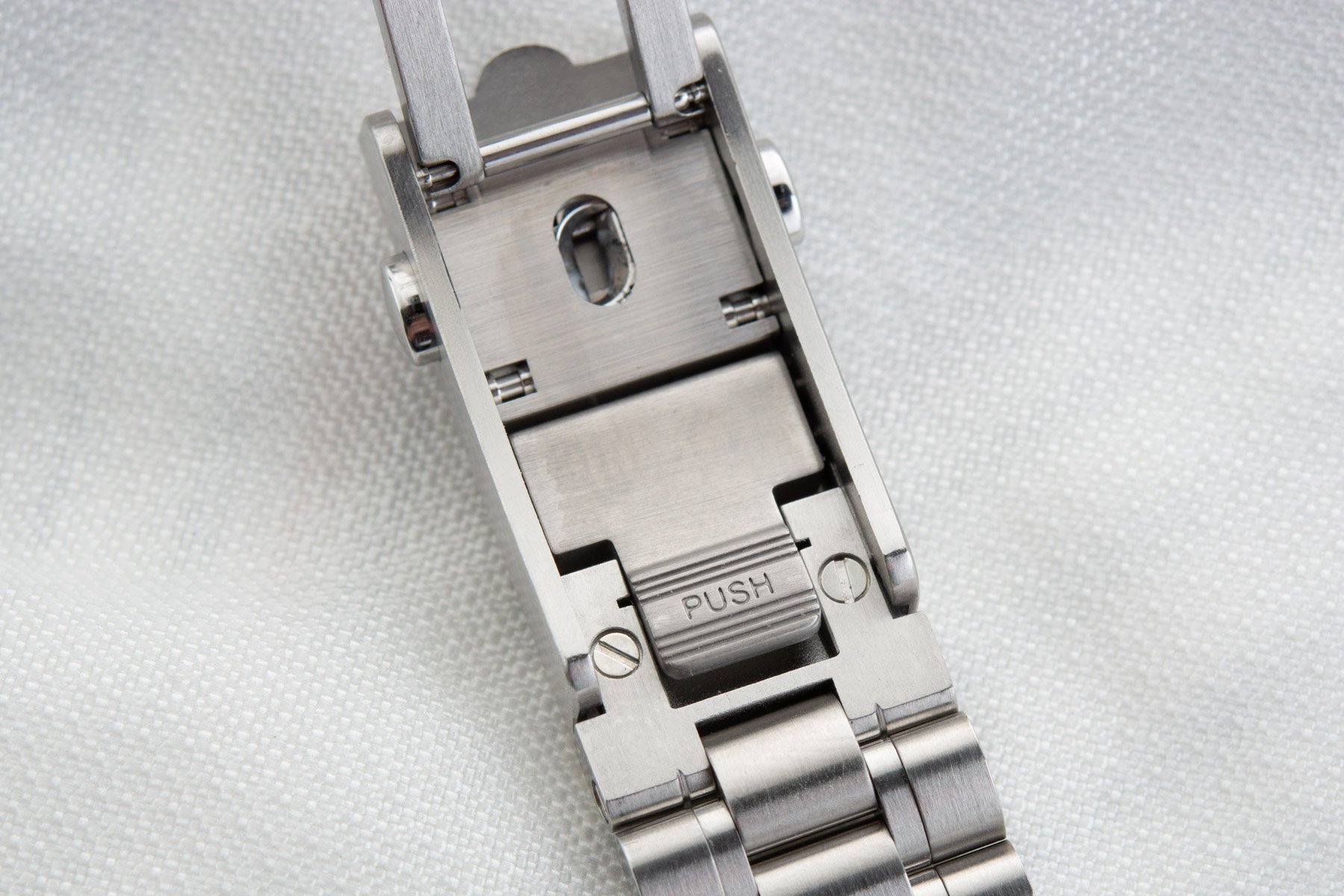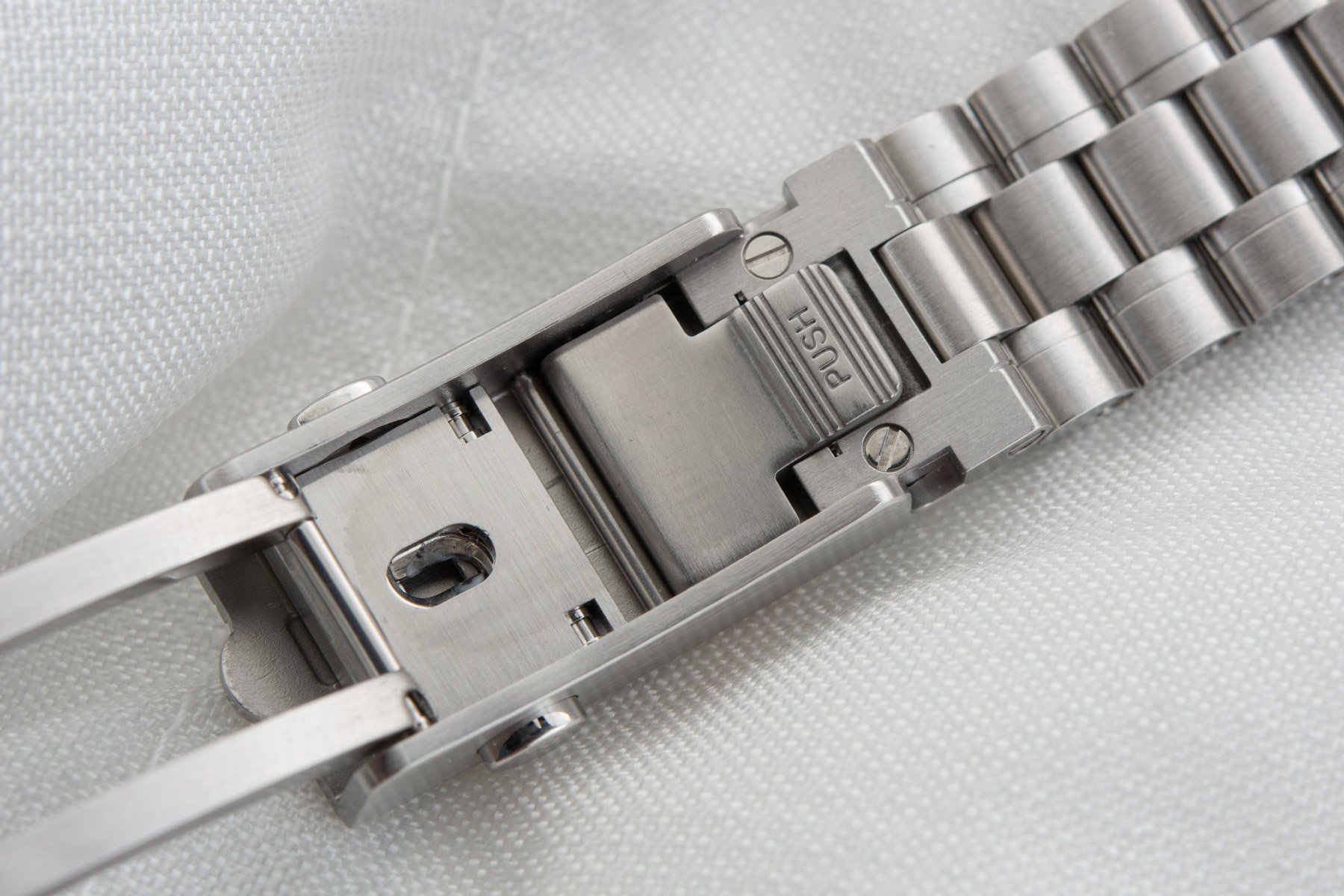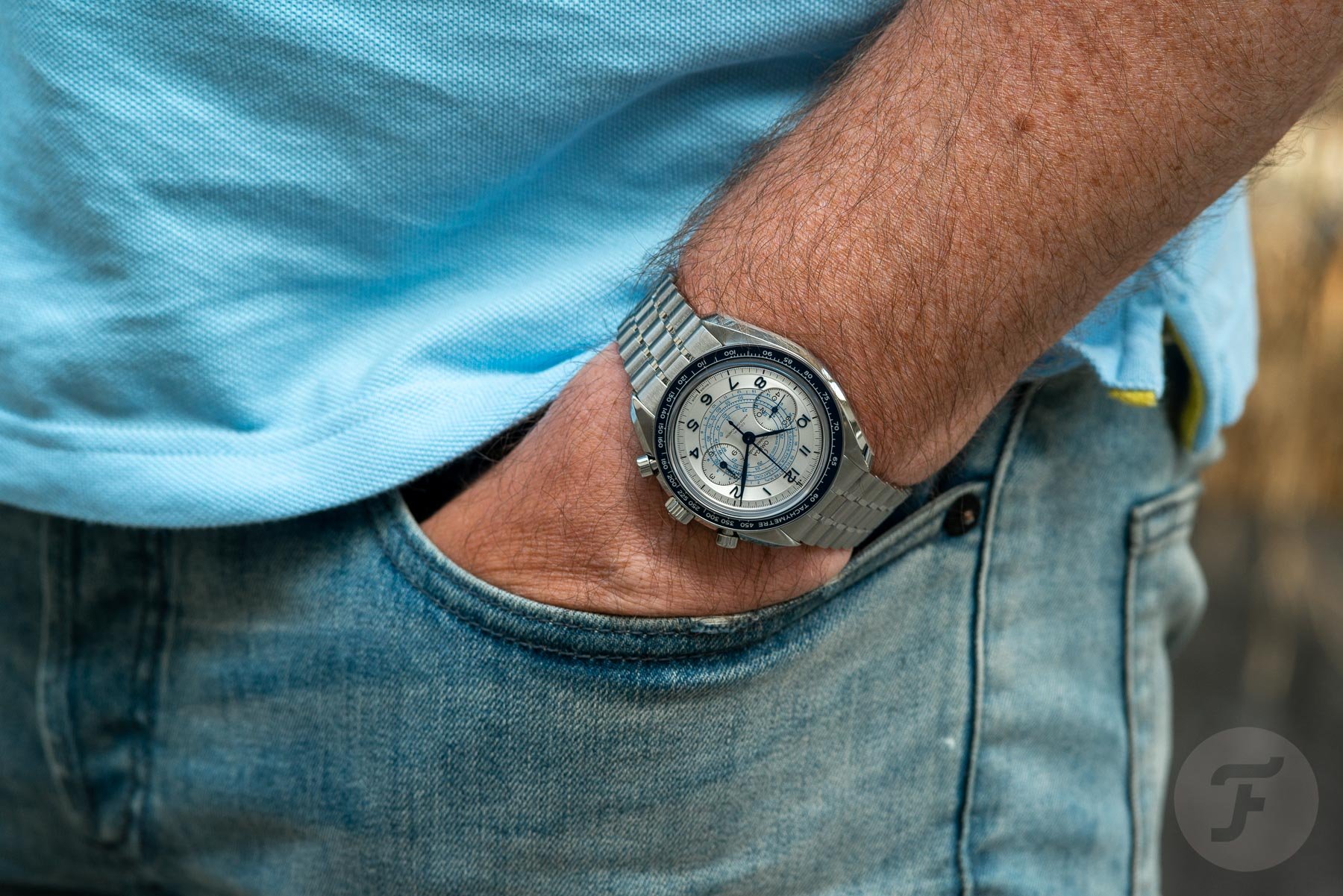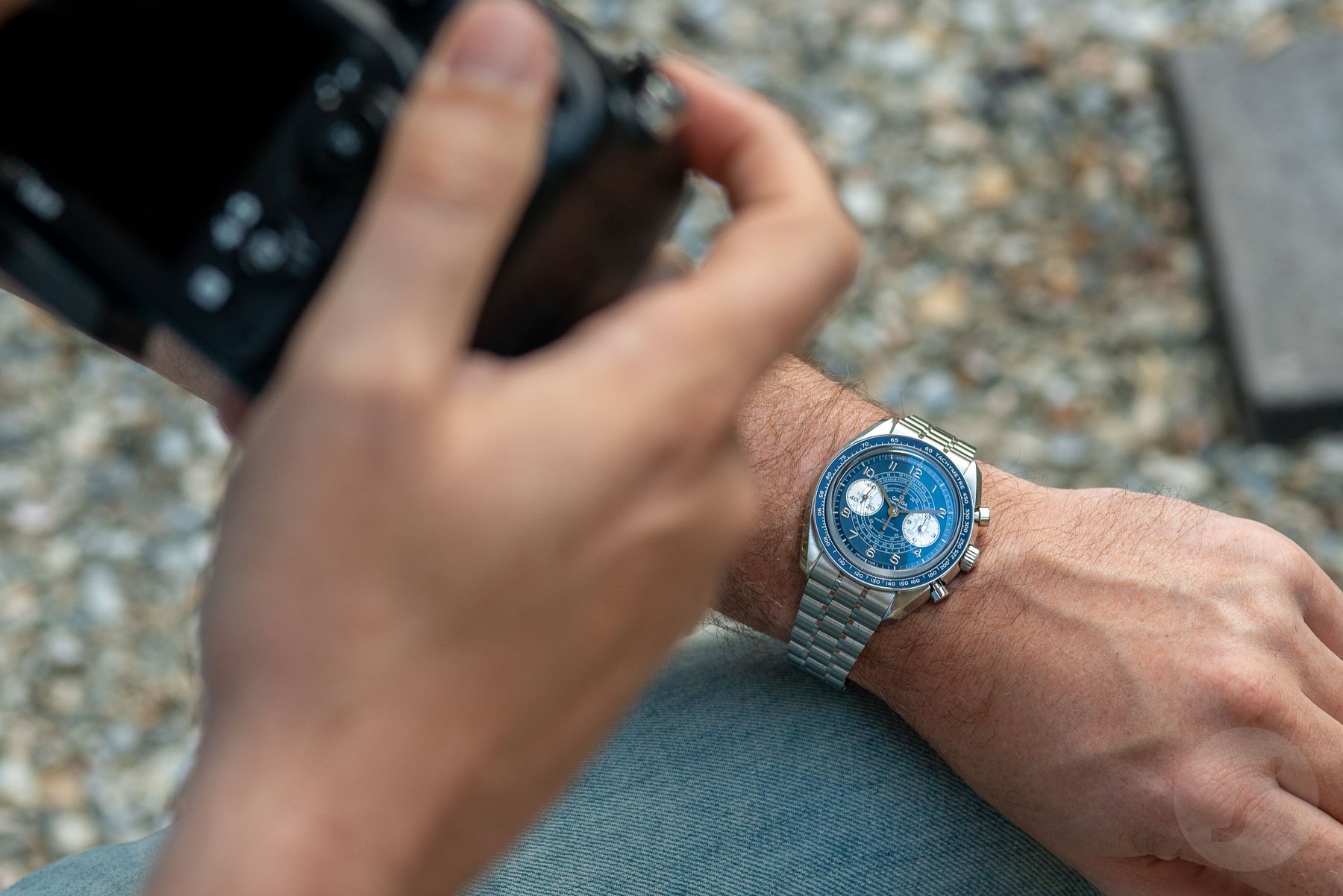Hot Take: The New Omega Speedmaster Chronoscope
Omega is surprising each and everyone with the new Speedmaster Chronoscope collection, and it’s not even a (Speedy) Tuesday. It is also the introduction of a new movement for the Speedmaster, caliber 9908. A hand-wound two-register movement that has been Master Chronometer certified.
The first thing to notice about this new 43mm Omega Speedmaster Chronoscope are the scales on the dial and the applied Arabic numerals. We have two of the new models here, the silver dialed reference 329.30.43.51.02.001 and the blue dial reference 329.30.43.51.03.001. Chronoscope is not a new name indeed, in case it sounds familiar to you. Omega has used it before, for its De Ville collection. Fun fact: Buzz Aldrin can often be spotted on pictures wearing an older De Ville Chronoscope watch. As you might know, “chronoscope” refers to the measurement of small time intervals.
Omega Speedmaster Chronoscope
The scales on the dial will remind some of you of the Omega watches from the 1930s and 1940s, with the famous caliber 33.3 movements, for example. These chronographs, produced a long time before the Speedmaster was introduced, often had several scales on the dial.
How the scales work
There was the tachymeter scale, which you already know from Omega’s Speedmaster, and then there’s the telemeter scale as well. The telemeter scale is used to measure the distance between a specific event and the observer, one that is first visible and then audible. Think of a lightning strike and the rumble of thunder, for example.
When the event occurs (lightning), start the chronograph and stop it when you hear the clap of thunder. This way, you can measure how far away you are from the flash. Its gradation is based on the speed of sound, which is 343 meters per second.
On the new Omega Speedmaster Chronoscope, you will also find a pulsations scale. Before there was the Apple Watch with a sensor that measures your heart rate, some doctors would use a watch with a pulsometer. In this case, Omega uses a “base 30” scale, meaning you need to start the chronograph and count the heartbeats. After 30 beats, you stop the chronograph and read the number from the pulsometer scale. This is how you measure the heart rate.
Speedmaster Chronoscope Specifications
First things first! You’d like to know some details and we have them for you. This new Omega Speedmaster Chronoscope measures 43mm in diameter and 48mm from lug-to-lug. The thickness of the Speedmaster Chronoscope is only 12.8mm. But wait, that’s actually quite thin for a Speedmaster with two registers.
This is because it has a new hand-wound movement caliber 9908 instead of the “usual” 9300/9900 self-winding movements in Omega’s two-register chronographs. More on this later… The lug width is 21mm and the clasp measures 16mm. Before I discuss the bracelet, let’s have a closer look at the new Omega caliber 9908 movement.
Omega Caliber 9908
I took the liberty of removing the bracelet to get a proper shot of the movement, so here’s hoping that Omega does not mind. As you can see, we have a hand-wound movement with a column-wheel chronograph and silicon balance. It is a very “closed” movement, but it gave Omega the chance to do some proper decorative finishing. As you can see in the image above, the waves pattern has its “heart” in the (Co-Axial) escapement and balance wheel. That makes sense because this component is often referred to as the heart of a mechanical movement. This 44 jewel movement has a power reserve of 60 hours. Like the 8900/9900 movements, pulling the crown into the first position allows one to set the hour hand independently. Pull again and you can set the time. It features the hours, minutes, (small) seconds for normal time, a central seconds hand, and a small minute and small hour hand for the chronograph functions. Both the chronograph minute and hour hand are located in the sub-dial at 3 o’clock.
A new clasp on the Speedmaster bracelet
The bracelet on the new Omega Speedmaster Chronoscope looks very familiar I am sure. I dubbed it the “Nixon” bracelet (not to everyone’s liking) on the gold Speedmaster and Omega uses it on the new Speedmaster Professional Moonwatch Master Chronometer as well. Some of you complained that there was no easy adjustment system on the clasp of the new bracelet. Well, Omega listened! Inside the clasp of this new bracelet, there’s a small button that says “Push”. By doing so, you are able to adjust it by nearly (2.3mm) half the size of a link.
It makes life easier for you if you want to extend the size of the bracelet a little bit during hot summer days. I never minded the “manual” version of the bracelet, where you can size it in 1/3rd and 2/3rd of a link, but this is more convenient for sure.
Versions, Thoughts, and Price
This new Omega Speedmaster Chronoscope comes in six different versions, plus a Bronze gold model. But we have the silver dial and blue dial here for review. I think we might need a bit of time to wear and try these watches before we come to a final conclusion, but my first impression of the new 43mm Omega Speedmaster Chronoscope is that I love the silver dial version best with its blue hands and Arabic numerals. The size of the watch is good and definitely thinner than the “Dark Side of the Moon” and other self-winding compur Speedmaster models. I also like the link to the past with the different scales on the dial.
Omega comes with several versions of the new Speedmaster Chronoscope, but the models you see here come with a stainless steel bracelet and will retail for €8,600.
More information via the Omega website.

